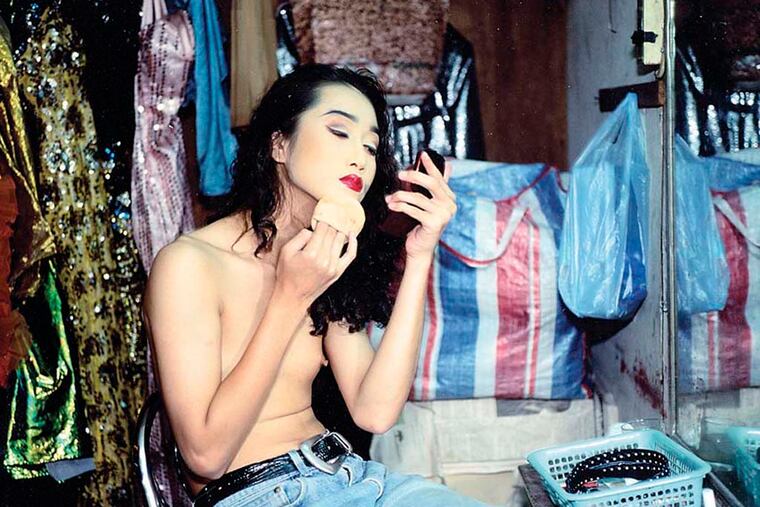Galleries: Two sculptors are given their due
Two much-admired Philadelphia sculptors are being remembered in eloquent exhibitions that should not be missed. Robinson Fredenthal's enormous, geometric steel sculptures are ubiquitous in this city if you know where to look: in the lobby and outdoor plaza of the SEPTA building at 1234 Market St.; in a pedestrian walkway behind the Wells Fargo Bank on Market between Fourth and Fifth Streets; at Eighth and Spring Garden; and on Woodland Walk, near Walnut and 34th.

Two much-admired Philadelphia sculptors are being remembered in eloquent exhibitions that should not be missed.
Robinson Fredenthal's enormous, geometric steel sculptures are ubiquitous in this city if you know where to look: in the lobby and outdoor plaza of the SEPTA building at 1234 Market St.; in a pedestrian walkway behind the Wells Fargo Bank on Market between Fourth and Fifth Streets; at Eighth and Spring Garden; and on Woodland Walk, near Walnut and 34th.
But his small works are not so easily found - case in point, a group of small, unique cast-bronze and cast-steel sculptures that have been housed in the Architectural Archives at the University of Pennsylvania since 2003 (Fredenthal died in 2009). Now, in an arrangement among the Archives, Fredenthal's family, and Larry Becker Contemporary Art, they're being shown at the gallery through the end of this month.
Called Robin by his friends, Fredenthal might have become an architect had he not developed Parkinson's disease in 1964, three years before graduating from the University of Pennsylvania with a degree in architecture. As drawing became increasingly challenging, he pursued his fascination with geometry as a sculptor instead, making (with the help of assistants) small models of variations on geometric forms, in particular the cube and the tetrahedron. (An exhibition of Tony Smith's large geometric sculptures at the Institute of Contemporary Art in 1966-67, is said to have made a powerful impression on him).
As Fredenthal's models were being realized as large-scale steel sculptures, he continued to make small models and unique sculptures. Hundreds of small cardboard sculptures lined the shelves of his workroom.
Positioned together on long white tabletops perfectly adjoined in the center of the Larry Becker gallery, Fredenthal's bronze and steel "mini" sculptures display the full range of geometric relationships he explored - and the humor and obsessiveness he brought to his art.
At Drexel University's Leonard Pearlstein Gallery, gallery director Dino Pelliccia, a sculptor himself, has organized "Bill Walton: Artist to Art," an exhibition of sculptures, paintings, and prints made by Walton and given to his artist friends over the years. Some Waltons were acquired in trades, some were gifts, still others were bequeathed.
Walton, who taught printmaking at Moore College of Art (now Moore College of Art & Design) for many years and died in early 2010, exhibited his work in various Philadelphia galleries over the years, but eventually decided to represent himself. His small, modest, well-crafted sculptures, fashioned from found and manipulated materials, seemed to spring from the other mainstays of his life: family, friendships, and fishing.
Though Walton's sculptures almost always have a strong, poetic presence - he was a master at evoking the magic of everyday life and things left behind but intensely remembered - Pelliccia has orchestrated a particularly haunting and lovely tribute to Walton through some friends who knew him best.
Leonard Pearlstein Gallery, URBN Center Annex, 3401 Filbert St., 11 a.m. to 6 p.m. Tuesdays through Sundays. 215-895-2548 or www.drexel.edu/westphal/resources/
LeonardPearlsteinGallery. Through Dec. 5.
Behind the lens
Haverford College's enormous photography collection has a healthy number of women represented in it, as demonstrated by "The Female Gaze," an exhibition in the college's Atrium Gallery organized by William Earle Williams, the collection's curator and the Audrey A. and John L. Dusseau Professor in the Humanities. More to the point, though - and also made abundantly clear by this show - is how extraordinary how many of them are.
The show's title could have been inspired by Clementina Lady Hawarden's perfectly composed Two Women on a Balcony (c. 1864), in which a pair of beautifully dressed Victorian ladies appear to have been caught by the photographer in a romantic embrace, given the long look one of them aims at Hawarden.
Likewise, the title could also be musing on a surreal portrait of the model Carmen, shot by Lillian Bassman for Harper's Bazaar in 1963, or on Nan Goldin's intriguing Yogo Putting on Powder, Second Trip, Bangkok (1992), or Cindy Sherman's hilarious - and a little nasty - self-portrait as Santa's wife, Mrs. Claus. And there are works here that are genderless - Rosalind Solomon's striking 1977 photograph of the White House's imposing wrought-iron gate on a snowy day, or Leanne Yanabu's 1990 nocturnal image of a street in Hawaii, come to mind.
Still, this show offers some proof that women have more of an affinity for the personal and intimate moment than their male counterparts. But we knew that.